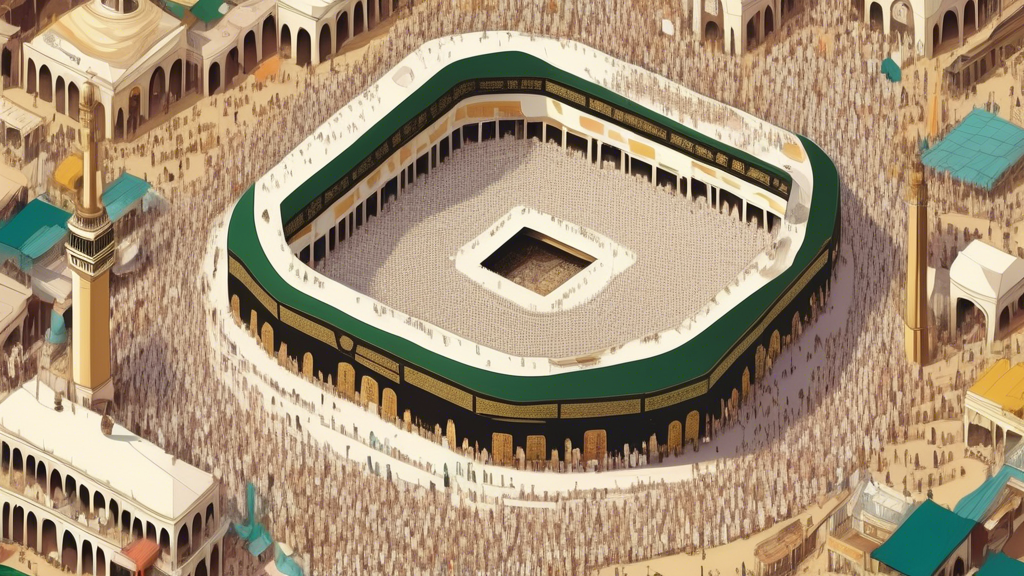Hajj, the annual Islamic pilgrimage to Mecca, Saudi Arabia, is considered one of the five pillars of Islam. Every Muslim who is physically and financially able to undertake the journey is required to do so at least once in their lifetime. This profound religious gathering is not only a demonstration of the solidarity and humility among Muslims but also a personal spiritual awakening for each pilgrim. Nusuk, often interchangeable with Hajj, specifically refers to the rituals performed during this holy pilgrimage.
Historical Background of Hajj
Hajj has a deep historical and spiritual foundation rooted in the Abrahamic tradition. According to Islamic teachings, the rituals of Hajj trace back to the Prophet Ibrahim (Abraham) and his son Isma’il (Ishmael). The Kaaba, which is at the center of the pilgrimage rites, was originally built by Ibrahim and Isma’il as a house of monotheistic worship. Over centuries, Hajj has been preserved in Islamic tradition, symbolizing both a return to origins and a communal affirmation of faith.
Core Rituals of Hajj
The activities and rites performed during Hajj are rich in symbolism and are conducted over a period of five to six days, starting from the 8th to the 12th or 13th of Dhu al-Hijjah, the last month of the Islamic lunar calendar.
Ihram
The first step for every pilgrim is entering a state of Ihram—spiritual purity—which involves wearing specific simple white garments that signify unity among all pilgrims, regardless of social or economic status. The state of Ihram also places prohibitions on certain actions such as cutting hair, clipping nails, and engaging in marital relations.
Tawaf
Upon arrival in Mecca, pilgrims perform Tawaf, which involves circumambulating the Kaaba seven times in a counterclockwise direction. This act of devotion represents the idea of life revolving around spiritual convictions and the unity of believers worldwide.
Sa’i
Following Tawaf, pilgrims perform Sa’i, walking seven times between the hills of Safa and Marwah. This ritual commemorates Hagar’s search for water for her son Isma’il, reflecting themes of struggle, endurance, and divine providence.
Standing at Arafat (Wuquf)
The pinnacle of the Hajj occurs at the Plain of Arafat where pilgrims stand in contemplative vigil and pray for God’s abundant forgiveness. This is known as Wuquf and represents the climax of the pilgrimage, emphasizing deep personal connection and repentance before God.
Muzdalifah and Rami al-Jamarat
After Arafat, pilgrims move to Muzdalifah where they collect pebbles for the next ritual—Rami al-Jamarat—where these stones are thrown at three pillars. This act symbolizes the rejection of evil, commemorating Ibrahim’s rejection of Satan’s temptation as he was commanded to sacrifice his son.
Eid al-Adha and Qurbani
The culmination of Hajj coincides with Eid al-Adha, the festival of sacrifice, during which animals are slaughtered to commemorate Ibrahim’s willingness to sacrifice his son in obedience to God. The meat from the sacrifice is shared among family, friends, and the needy, promoting a spirit of generosity.
Tawaf al-Ifadah
Tawaf al-Ifadah, also known as Tawaf az-Ziyarah, is performed as a symbol of having the pilgrim’s sins forgiven. This is often considered the final rite of Hajj, sealing the pilgrim’s renewed state of spiritual purity.
Hajj – A Spiritual Journey
The journey of Hajj is profound, transforming not just the outward practice of religion but also inward spirituality and ethical outlook. It is a journey that encapsulates submission to God, solidarity with fellow humans, and an intense reflection on one’s life purpose and ultimate return to God.
